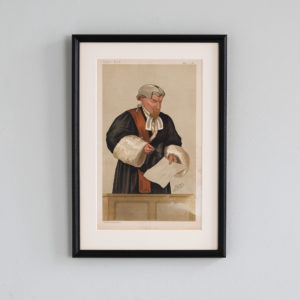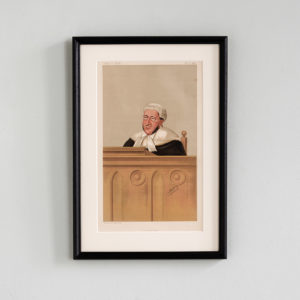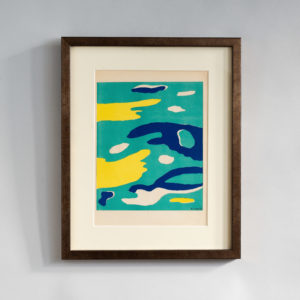8 items found
Page 1 of 1
-

Sir Archibald Macdonald, Knight and Baronet.
£190Sir Archibald Macdonald, Knight and Baronet.
A framed and mounted three-quarter-length mezzotint portrait of Sir Archibald Macdonald, 1st Baronet by by Henry Meyer. Sir Archibald Macdonald, 1st Baronet (13 July 1747 – 18 May 1826) was Scottish-born English lawyer, judge and politician. Born at Armadale Castle on The Isle of Skye, he was sent to England early to keep him away from Jacobite influence. He attended Westminster School from 1760 from where he went on to Christ Church, Oxford, graduating B.A. in 1768 and M.A. in 1772. He was subsequently called to the bar at Lincoln's Inn. Initially a Whig he later joined the King's party and as King's Counsel he was an enthusiastic prosecutor of Radicals, including the pamphleteer and agitator Thomas Paine for his Rights of Man in December 1792. A convivial man, he was nicknamed ‘the Arabian knight' in his lifetime for apparently having 'a thousand and one tales'. He is shown sitting in armchair, in wig and judicial robes; books, quill pen, inkpot by window at left£190 -

Stay, Please,
£190Stay, Please,
A framed chromolithograph picturing Mr Justice William Ventris Field, Baron Field of Wakenham. Queen's Council, later Queen's Bench, he oversaw the reorganisation of the court system following the Judicature Act of 1881 which established Judges Chambers in England and served (especially in the court of Chancery) to make trial without a jury the normal mode of trial, except in certain instances. In 1890, he retired from the bench and was raised to the peerage as Baron Field, of Wakenham in the County of Surrey, on 10 April 1890. He had been sworn of the Privy Council earlier the same year.£190 -

In His Military Capacity,
£170In His Military Capacity,
Framed Chromolithograph by SPY (Leslie Ward) depicting Mr Montagu Williams QC, teacher, British Army officer, actor, playwright, barrister and magistrate. His succesful defence of Mr John Young in his manslaughter trial, after the death of an opponent in the boxing ring, established a legal precedent around the sport.£170 -

The New Judge
£150The New Judge
A framed chromolithograph by SPY (Sir Leslie Ward) picturing the Hon. Sir Arthur Charles who presided over the first trial of Oscar Wilde for sodomy and gross indecency in which the Jury failed to agree a verdict.£150 -

Birth, Behaviour and Business,
£145Birth, Behaviour and Business,
Framed Chromolithograph by T (Theobald Chartran) showing Her Majesty's loyal opposition. The front back consists of three survivors of Lord Salisbury's collapsed administration. Lord John Manners, once Postmaster General and later 7th Duke of Rutland, Sir Stafford Northcote, former Chancellor of the Exchequer and Richard Assheton Cross, former Home Secretary. All three were seen as emblematic of the lethargy and inertia of the Conservative party of the period.£145 -

2nd Commissioner
£1452nd Commissioner
A framed chromolithograph by SPY (Sir Leslie Ward) picturing The Hon. Sir John Charles Frederick Sigismund Day a High Court Judge and art collector. One of the first Roman Catholic judges to be appointed to the English bench since the Reformation, he was called to the bench in 1882. Well known for sentencing criminals to lashes, in his latter years, he would sometimes listen intently to cases with his eyes closed, opening an eye suddenly if something significant were said, a mannerism which was jokingly referred to as "the peep of Day". He sat on the Parnell Commission, a judicial inquiry into allegations of crimes by Irish parliamentarian Charles Stewart Parnell which resulted in his acquittal and vindication. At the time it was said that it was on his insistence that Richard Pigott was put into the witness box and his forged letters, implicating Parnell in the Pheonix Park murders of 1882 exposed as fraudulent. He retired from the High Court of Justice in 1901, when he was granted an annuity of £3,500. In March the following year he was appointed to the Privy council. His portrait hangs in the Royal Courts of Justice.£145
Featured Items
-

The Dance, by Henri Matisse, Jan – March 1939 / No. 4.
£1,200The Dance, by Henri Matisse, Jan – March 1939 / No. 4.
The Verve Review was a purposefully luxurious. It ran from 1937 to 1960, but with only 38 editions available, due to the high degree of design and editorial work dedicated to each issue. Each edition contained unique lithographic prints, commissioned by the editor, and each cover a double-page lithograph elaborated by one of the artists contained within. It was the brainchild of its editor Stratis Eleftheriades, a Greek National who moved to Paris in the early thirties to take part in the growing Modernist movement, writing under the name of Teriade.£1,200 -

The Four Elements, Water by Fernand Leger, Verve Vol. 1 / No. 1.
£600The Four Elements, Water by Fernand Leger, Verve Vol. 1 / No. 1.
The Verve Review was a purposefully luxurious. It ran from 1937 to 1960, but with only 38 editions available, due to the high degree of design and editorial work dedicated to each issue. Each edition contained unique lithographic prints, commissioned by the editor, and each cover a double-page lithograph elaborated by one of the artists contained within. It was the brainchild of its editor Stratis Eleftheriades, a Greek National who moved to Paris in the early thirties to take part in the growing Modernist movement, writing under the name of Teriade.£600 -

Portrait by Andre Derain, Verve Vol 2 / No. 5-6.
£800Portrait by Andre Derain, Verve Vol 2 / No. 5-6.
The Verve Review was a purposefully luxurious. It ran from 1937 to 1960, but with only 38 editions available, due to the high degree of design and editorial work dedicated to each issue. Each edition contained unique lithographic prints, commissioned by the editor, and each cover a double-page lithograph elaborated by one of the artists contained within. It was the brainchild of its editor Stratis Eleftheriades, a Greek National who moved to Paris in the early thirties to take part in the growing Modernist movement, writing under the name of Teriade.£800 -

Printemps by Marc Chagall, Verve Vol. 1 / No. 3.
£800Printemps by Marc Chagall, Verve Vol. 1 / No. 3.
The Verve Review was a purposefully luxurious. It ran from 1937 to 1960, but with only 38 editions available, due to the high degree of design and editorial work dedicated to each issue. Each edition contained unique lithographic prints, commissioned by the editor, and each cover a double-page lithograph elaborated by one of the artists contained within. It was the brainchild of its editor Stratis Eleftheriades, a Greek National who moved to Paris in the early thirties to take part in the growing Modernist movement, writing under the name of Teriade.£800


